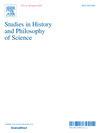用模拟模型解释
IF 1.8
2区 哲学
Q1 HISTORY & PHILOSOPHY OF SCIENCE
引用次数: 0
摘要
当研究人员处理难以解析或实际上无法求解的数学建模方程时,通常采用计算机模拟。在这种情况下,科学家似乎要处理两种不同但相互关联的模型:数学模型和模拟模型。这至少提出了两个哲学上有趣的问题。首先,在这种情况下,其中一个或另一个模型在产生解释的活动中起主要作用吗?其次,涉及数学模型和模拟模型的解释会是什么样子?我认为,在很多情况下,模拟模型在解释性发现中起着核心作用。在此基础上,我将提出模拟模型诱导解释的反事实说明。我声称,在这种方法中,我们经常发现模拟模型具有其基础数学模型的解释自主性,并通过将这一概念与有关科学模型自治作用的现有观点联系起来得出结论。本文章由计算机程序翻译,如有差异,请以英文原文为准。
Explaining with simulation models
Computer simulations are commonly employed when researchers work with analytically intractable or practically unsolvable mathematical modeling equations. In such cases, scientists seem to deal with two different but interrelated kinds of models: a mathematical model and a simulation model. This raises at least two philosophically interesting questions. First, does one or the other model figure centrally in the activity of generating an explanation in such situations? And second, what could an account of explanation involving both mathematical models and simulation models look like? I will argue that, in a large set of cases, the simulation model serves the central role in explanatory discovery. On this basis, I will then present a counterfactual account of simulation model-induced explanation. I claim that on this approach, we often find that the simulation model possesses an explanatory autonomy from its underlying mathematical models and conclude by relating this notion to extant views on the autonomous role of scientific models.
求助全文
通过发布文献求助,成功后即可免费获取论文全文。
去求助
来源期刊

Studies in History and Philosophy of Science
管理科学-科学史与科学哲学
CiteScore
2.50
自引率
10.00%
发文量
166
审稿时长
6.6 weeks
期刊介绍:
Studies in History and Philosophy of Science is devoted to the integrated study of the history, philosophy and sociology of the sciences. The editors encourage contributions both in the long-established areas of the history of the sciences and the philosophy of the sciences and in the topical areas of historiography of the sciences, the sciences in relation to gender, culture and society and the sciences in relation to arts. The Journal is international in scope and content and publishes papers from a wide range of countries and cultural traditions.
 求助内容:
求助内容: 应助结果提醒方式:
应助结果提醒方式:


